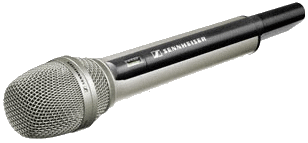Fri, 23 Mar 2012 16:00 GMT
USA FCC, Digital Enhanced Cordless Telecommunications (DECT) Forum (1920-1930 MHz). Follow the link.
Wed, 22 Feb 2012 12:00 GMT
Teleconformity provides North American DECT testing and Certification, covering traditional CDMA450 systems, 2.4GHz DSSS phones and "real DECT" in the 1910-1930MHz band (which for FCC requires UTAM involvement). For Canada, the standard used is RSS-213. For Europe, DECT is designated in the 1880-1900MHz band and has also the experience to test and certify this technology. Learn more about DECT in the link provided. For more information or an inquiry, you are welcome to contact us.
Mon, 07 Nov 2011 20:00 GMT
Japan, MIC recently added Leased Line Terminal Equipment (LTE, 100BASE-T, XGP), DECT and sPHS to the Types of Terminal Equipment. For more information, please contact us.
Fri, 13 May 2011 09:00 GMT
Europe, the Netherlands ministry of economic affairs has stated that it wants to keep the digital dividend (762-890 MHz) free for mobile Internet and permanently allow the DECT guard band suitable for license free use, such as for microphones and low power networks like pico cells (source: wirelessfederation)
Mon, 07 Mar 2011 18:30 GMT

Europe, meet and learn about all existing ETSI communities and their respective roles and responsibilities. The current existing groups are: 3GPP, AERO, ATTM, BRAN, Broadcast, Cloud, DECT, EE, eHEALTH, ENTEL, ERM, ESI, HF, INT, ITS, LI, M2M, MCD, MSG, NTS, PLT, RRS, RT, SAFETY, SAGE, SCP, SES, STQ, TETRA, TISPAN, USER and ISG. Follow the link.
Fri, 25 Feb 2011 10:00 GMT
Article on DECT published by Teleconformity (TCMY), containing basic information resources about DECT requirements.
Wed, 22 Dec 2010 16:00 GMT
Europe, the DECT Forum, the international association of the wireless home and enterprise communication industry, is pleased to announce the opening of the CAT-iq 2.0 Certification Program. With the Certification Program in place CAT-iq is a key voice and networking technology in home gateways.
Wed, 15 Dec 2010 14:00 GMT
Europe, the DECT Forum, the worldwide association of the wireless home and enterprise communication industry, and Informa Telecoms and Media announce that the registration is open for the 15th DECT World & CAT-iq Conference on January 26-27, 2011 in Amsterdam.
Fri, 05 Nov 2010 15:00 GMT

This RSS link refers to a useful article explaining wireless microphones.
At present, analog wireless microphones in the US may/could operate in:
169.445-171.905MHz for secondary use (90.265(b): 50mW B=54kHz).
54-72, 76-88, 174-216MHz (74.861: 50mW); 470-608, 614-698MHz (74.861: 250mW) .
49.82-49.9MHz (15.235); 72-73,74.6-74.8,75.2-76MHz (15.237);
88-108MHz (15.239) and 902-928, 2400-2483.5, 5725-5875MHz (Part 15.249) are an option but not very often considered.
All part 15 devices operating outside the restricted bands (15.205) and outside the TV bands can also be used when authorized according the limits and provisions of 15.209. Any part 15 device capable of transmitting in the TV bands (ch.2-51, excluding ch.37) must be marketed in compliance with all 15.216 alerts. Part 15 devices are Unlicensed and do not require an end-user use-license.
Microphones used in the 700MHz band (Part 74: 698-806MHz) are prohibited by the FCC after 2010/06/12. Devices authorized under Part 74 and 90 require a permanent (or temporarily) end-user use-license to be obtained from the FCC and must be operated at minimum distances from broadcast stations.
Digital auditive devices or microphones can operate under the provisions of 15.247 (902-928, 2400-2483.5, 5725-5850MHz; FHSS Bluetooth or digital modulated) or 15D (1920-1930MHz; DECT based).
Wed, 03 Nov 2010 08:00 GMT
Can a DECT CAT-iq system that defines five frequency bands divided into 12 time slots for each band, for a total of 60 duplex time/frequency windows, apply the provisions of FCC Section 15.323 (c) (5) if a connection uses an access channel with one or two time windows? For the case when two time/frequency windows are used the system would still monitor 60 time/frequency windows. (KDB 377704)
Thu, 30 Sep 2010 14:00 GMT
Teleconformity (TCMY) introduces Tech Track! service, providing an overview of technology specific news items published on the Teleconformity News feeds. It currently information about LTE, WCDMA, GSM, RFID, SRD, WLAN, BlueTooth, ZigBee, UWB and DECT technology.
Thu, 11 Aug 2010 15:00 GMT
Europe, R&TTE standards recently harmonised:
EN60065:02+A1:06
► +A11:08 per 7/1 (audio/video),
EN60825-2:04
► +A1:07 per 2/1 (optical fiber),
(or EN300086-2:V1.3.1)
Fri, 9 Jul 2010 12:00 GMT
Europe, overview of revised DECT standards in 2010: EN301406V2.1.1 aligns the radio testing standard to the features of New Generation DECT systems. It extends radiated spurious emission testing in 4-12.75GHz while conducted spurious emission testing is only required for devices with antenna connectors. EN301489-6V1.3.1 contains additions and changes in order to cover the changes coming from the revisions of the DECT standards. It specifes changes for audio break through and bit error measurements.